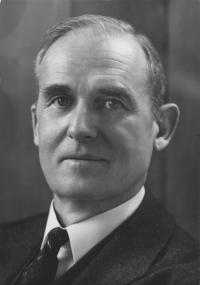
Canadian Nobel Prize Winners
Commemorating Canada's Nobel Laureates
NobelCanadian
Defining Moments Canada's NobelCanadian explores the lives, careers, and impacts of Canada’s Nobel Laureates. Learn about the individuals and organizations who studied, worked, and based their identities in Canada.
Click the names of the Nobel Prize winners to learn more about their lives and work in Canada.

Arthur McDonald
Arthur McDonald. Click to expand.
Nobel Win: 2015 Nobel Prize in Physics “for the discovery of neutrino oscillations, which shows that neutrinos have mass.” Awarded jointly with Takaaki Kajita.

Alice Munro
Alice Munro. Click to expand.
Nobel Win: 2013 Nobel Prize in Literature for “master of the contemporary short story.”

Willard Boyle
Willard Boyle. Click to expand.
Nobel Win: 2009 Nobel Prize in Physics “for the invention of an imaging semiconductor circuit - the CCD sensor.” Awarded jointly with American physicist George E. Smith & shared with physicist Charles Kao.

Pugwash Conferences on Science and World Affairs
Pugwash Conferences on Science and World Affairs. Click to expand.
Nobel Win: 1995 Nobel Peace Prize “for their efforts to diminish the part played by nuclear arms in international politics and, in the longer run, to eliminate such arms.”

John Polanyi
John Polanyi. Click to expand.
Nobel Win: 1986 Nobel Prize in Chemistry “for their contributions concerning the dynamics of chemical elementary processes.” Shared the prize with Dudley Herschbach and Yuan T. Lee.

Bertram Brockhouse
Bertram Brockhouse. Click to expand.
Nobel Win: 1994 Nobel Prize in Physics “for the development of neutron spectroscopy.” Awarded jointly with Clifford Shull.

Michael Smith
Michael Smith. Click to expand.
Nobel Win: 1993 Nobel Prize in Chemistry “for his fundamental contributions to the establishment of oligonucleotide-based, site-directed mutagenesis and its development for protein studies.” Shared with Kary B. Mullis.

Gerhard Herzberg
Gerhard Herzberg. Click to expand.
Nobel Win: 1971 Nobel Prize in Chemistry "for his contributions to the knowledge of electronic structure and geometry of molecules, particularly free radicals."

Lester B. Pearson
Lester B. Pearson. Click to expand.
Nobel Win: 1957 Nobel Peace Prize "for his crucial contribution to the deployment of a United Nations Emergency Force in the wake of the Suez Crisis."

William Giauque
William Giauque. Click to expand.
Nobel Win: 1949 Nobel Prize in Chemistry for “for his contributions in the field of chemical thermodynamics, particularly concerning the behaviour of substances at extremely low temperatures.”

Frederick Banting
Frederick Banting. Click to expand.
Nobel Win: 1923 Nobel Prize in Physiology or Medicine “for the discovery of insulin.” Awarded jointly with John J. R. Macleod, and Banting chose to share his half of the award with Charles Best.

John James Rickard Macleod
John James Rickard Macleod. Click to expand.
Nobel Win: 1923 Nobel Prize in Physiology or Medicine “for the discovery of insulin”. Awarded jointly with Frederick Banting, and MacLeod chose to share his half of the award with James B. Collip.

Ernest Rutherford
Ernest Rutherford. Click to expand.
Nobel Win: 1908 Nobel Prize in Chemistry “for his investigations into the disintegration of the elements, and the chemistry of radioactive substances.” Shared with Frederick Soddy, who later went on to win his own Nobel Prize in Chemistry in 1921.

Michael Houghton
Michael Houghton. Click to expand.
Nobel Win: 2020 Nobel Prize in Physiology or Medicine "for the discovery of Hepatitis C virus." Awarded jointly with Qui-Lim Choo, George Kuo and Daniel W. Bradley.

Andrew Schally
Andrew Schally. Click to expand.
Nobel Win: 1977 Nobel Prize in Physiology or Medicine "for their discoveries concerning the peptide hormone production of the brain". Half awarded jointly between Dr. Schally & Dr. Roger C. L. Guillemin, with the remaining half of the Nobel Prize being awarded to Rosalyn Sussman Yalow, "for the development of radioimmunoassays of peptide hormones".

Donna Strickland
Donna Strickland. Click to expand.
Nobel Win: 2018 Nobel Prize in Physics "for their method of generating high-intensity, ultra-short optical pulses". Half awarded jointly between Dr. Strickland & Dr. Gérard Mourou, with the remaining half of the Nobel Prize being awarded to Arthur Ashkin "for the optical tweezers and their application to biological systems".

Henry Taube
Henry Taube. Click to expand.
Nobel Win: 1983 Nobel Prize in Chemistry "for his work on the mechanisms of electron transfer reactions, especially in metal complexes".
To learn more about other Canadian Nobel Prize winners, check out our other story maps!
Illustrated Series
Click the links below to view the illustrated series about Alice Munro, Bertram Brockhouse, and the Pugwash Conferences.
NobelCanadian Project Resources:
Like This StoryMap? Click the links below to learn about creating your own!
Click Here to Contact Us